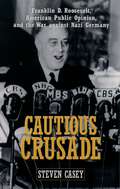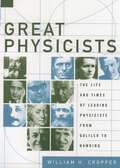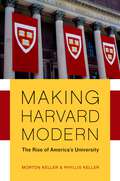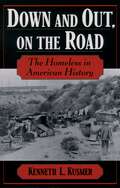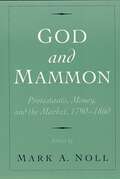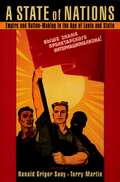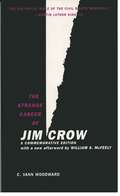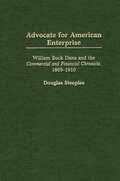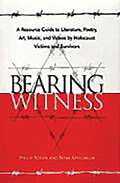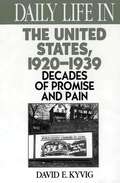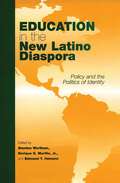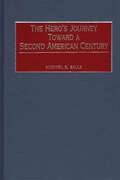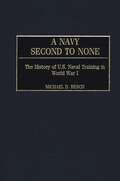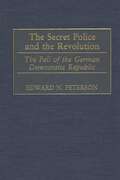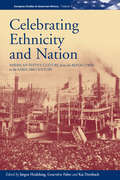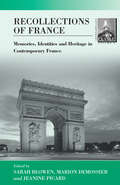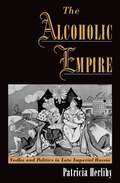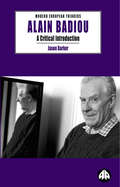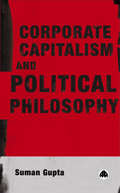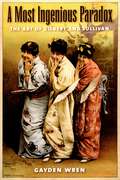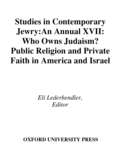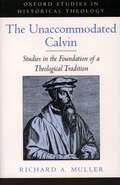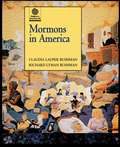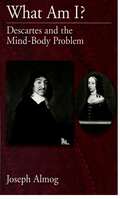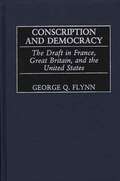- Table View
- List View
Cautious Crusade: Franklin D. Roosevelt, American Public Opinion, and the War against Nazi Germany
by Steven CaseyAmerica's struggle against Nazism is one of the few aspects of World War II that has escaped controversy. Historians agree that it was a widely popular war, different from the subsequent conflicts in Korea and Vietnam because of the absence of partisan sniping, ebbing morale, or calls for a negotiated peace. In this provocative book, Steven Casey challenges conventional wisdom about America's participation in World War II. Drawing on the numerous opinion polls and surveys conducted by the U.S. government, he traces the development of elite and mass attitudes toward Germany, from the early days of the war up to its conclusion. Casey persuasively argues that the president and the public rarely saw eye to eye on the nature of the enemy, the threat it posed, or the best methods for countering it. He describes the extensive propaganda campaign that Roosevelt designed to build support for the war effort, and shows that Roosevelt had to take public opinion into account when formulating a host of policies, from the Allied bombing campaign to the Morgenthau plan to pastoralize the Third Reich. By examining the previously unrecognized relationship between public opinion and policy making during World War II, Casey's groundbreaking book sheds new light on a crucial era in American history.
Great Physicists: The Life and Times of Leading Physicists from Galileo to Hawking
by William H. CropperHere is a lively history of modern physics, as seen through the lives of thirty men and women from the pantheon of physics. William H. Cropper vividly portrays the life and accomplishments of such giants as Galileo and Isaac Newton, Marie Curie and Ernest Rutherford, Albert Einstein and Niels Bohr, right up to contemporary figures such as Richard Feynman, Murray Gell-Mann, and Stephen Hawking. We meet scientists--all geniuses--who could be gregarious, aloof, unpretentious, friendly, dogged, imperious, generous to colleagues or contentious rivals. As Cropper captures their personalities, he also offers vivid portraits of their great moments of discovery, their bitter feuds, their relations with family and friends, their religious beliefs and education. In addition, Cropper has grouped these biographies by discipline--mechanics, thermodynamics, particle physics, and others--each section beginning with a historical overview. Thus in the section on quantum mechanics, readers can see how the work of Max Planck influenced Niels Bohr, and how Bohr in turn influenced Werner Heisenberg. Our understanding of the physical world has increased dramatically in the last four centuries. With Great Physicists, readers can retrace the footsteps of the men and women who led the way.
Making Harvard Modern: The Rise of America's University
by Morton Keller Phyllis KellerMaking Harvard Modern is a candid, richly detailed portrait of America's most prominent university from 1933 to the present: seven decades of dramatic change. Early twentieth century Harvard was the country's oldest and richest university, but not necessarily its outstanding one. By the century's end it was widely regarded as the nation's, and the world's, leading institution of higher education. With verve, humor, and insight, Morton and Phyllis Keller tell the story of that rise: a tale of compelling personalities, notable achievement and no less notable academic pratfalls. Their book is based on rich and revealing archival materials, interviews, and personal experience. Young, humbly born James Bryant Conant succeeded Boston Brahmin A. Lawrence Lowell as Harvard's president in 1933, and set out to change a Brahmin-dominated university into a meritocratic one. He hoped to recruit the nation's finest scholars and an outstanding national student body. But the lack of new money during the Depression and the distractions of World War Two kept Conant, and Harvard, from achieving this goal. In the 1950s and 1960s, during the presidency of Conant's successor Nathan Marsh Pusey, Harvard raised the money, recruited the faculty, and attracted the students that made it a great meritocratic institution: America's university. The authors provide the fullest account yet of this transformation, and of the wrenching campus crisis of the late 'sixties. During the last thirty years of the twentieth century, a new academic culture arose: meritocratic Harvard morphed into worldly Harvard. During the presidencies of Derek Bok and Neil Rudenstine the university opened its doors to growing numbers of foreign students, women, African- and Asian-Americans, and Hispanics. Its administration, faculty, and students became more deeply engaged in social issues; its scientists and professional schools were more ready to enter into shared commercial ventures. But worldliness brought its own conflicts: over affirmative action and political correctness, over commercialization, over the ever higher costs of higher education. This fascinating account, the first comprehensive history of a modern American university, is essential reading for anyone with an interest in the present state and future course of higher education.
Down and Out, on the Road: The Homeless in American History
by Kenneth L. KusmerCovering the entire period from the colonial era to the late twentieth century, this book is the first scholarly history of the homeless in America. Drawing on sources that include records of charitable organizations, sociological studies, and numerous memoirs of formerly homeless persons, Kusmer demonstrates that the homeless have been a significant presence on the American scene for over two hundred years. He probes the history of homelessness from a variety of angles, showing why people become homeless; how charities and public authorities dealt with this social problem; and the diverse ways in which different class, ethnic, and racial groups perceived and responded to homelessness. Kusmer demonstrates that, despite the common perception of the homeless as a deviant group, they have always had much in common with the average American. Focusing on the millions who suffered downward mobility, Down and Out, On the Road provides a unique view of the evolution of American society and raises disturbing questions about the repeated failure to face and solve the problem of homelessness.
God and Mammon: Protestants, Money, and the Market, 1790-1860
by Mark A. NollThis collection of all new essays by leading historians offers a close look at the connections between American Protestants and money in the Antebellum period. During the first decades of the new American nation, money was everywhere on the minds of church leaders and many of their followers. Economic questions figured regularly in preaching and pamphleteering, and they contributed greatly to perceptions of morality both public and private. In fact, money was always a religious question. For this reason, argue the authors of these essays, it is impossible to understand broader cultural developments of the period--including political developments--without considering religion and economics together. In God and Mammon, several essays examine the ways in which the churches raised money after the end of establishment put a stop to state funding, such as the collection of pew rents, lotteries, and free-will offerings, which only came later and at first were used only for benevolent purposes. Other essays look at the role of money and markets in the rise of Christian voluntary societies. Still others examine the inter-denominational strife, documenting frequent accusations that theological error led to the misuse of money and the arrogance of wealth. Taken together, the essays provide essential background to an issue that continues to loom large and generate controversy in the Protestant community in America.
A State of Nations: Empire and Nation-Making in the Age of Lenin and Stalin
by Ronald Grigor Suny Terry MartinThis collected volume, edited by Ron Suny and Terry Martin, shows how the Soviet state managed to create a multiethnic empire in its early years, from the end of the Russian Revolution to the end of World War II. Bringing together the newest research on a wide geographic range, from Russia to Central Asia, this volume is essential reading for students and scholars of Soviet history and politics.
The Strange Career of Jim Crow
by The late C. Vann WoodwardC. Vann Woodward, who died in 1999 at the age of 91, was America's most eminent Southern historian, the winner of a Pulitzer Prize for Mary Chestnut's Civil War and a Bancroft Prize for The Origins of the New South. Now, to honor his long and truly distinguished career, Oxford is pleased to publish this special commemorative edition of Woodward's most influential work, The Strange Career of Jim Crow. The Strange Career of Jim Crow is one of the great works of Southern history. Indeed, the book actually helped shape that history. Published in 1955, a year after the Supreme Court in Brown v. Board of Education ordered schools desegregated, Strange Career was cited so often to counter arguments for segregation that Martin Luther King, Jr. called it "the historical Bible of the civil rights movement." The book offers a clear and illuminating analysis of the history of Jim Crow laws, presenting evidence that segregation in the South dated only to the 1890s. Woodward convincingly shows that, even under slavery, the two races had not been divided as they were under the Jim Crow laws of the 1890s. In fact, during Reconstruction, there was considerable economic and political mixing of the races. The segregating of the races was a relative newcomer to the region. Hailed as one of the top 100 nonfiction works of the twentieth century, The Strange Career of Jim Crow has sold almost a million copies and remains, in the words of David Herbert Donald, "a landmark in the history of American race relations."
Advocate for American Enterprise: William Buck Dana and the Commercial and Financial Chronicle, 1865-1910 (Contributions in Economics and Economic History)
by Douglas SteeplesIn 1865, William Buck Dana, working a bold new departure in American journalism, established the nation's first business weekly, the Commercial and Financial Chronicle, in the country's commercial nerve center, New York City. As its publisher and editor, he became the nation's most influential reporter and commentator on business and finance, playing a major role in creating a national and international economy. Unequaled as a comprehensive and reliable source of business news, Dana's Chronicle has become a critical source for studying 19th century business history. This book is a study of Dana the man, his ideas, and their importance.Divided into three sections, the book considers Dana's formative years, his career, and his later life. The book then turns to the main themes conveyed in the Chronicle's editorial content, allowing the reader to imaginatively reconstruct Dana's mental world. Comments on Dana's and his paper's importance and influence are also included. While enlarging our understanding of Dana, the Chronicle, and economic thought of the time, Advocate for American Enterprise will enhance our understanding of this critically important era.
Bearing Witness: A Resource Guide to Literature, Poetry, Art, Music, and Videos by Holocaust Victims and Survivors
by Philip Rosen Nina ApfelbaumThis resource guide will help readers locate over 800 first-person accounts, fiction, poetry, art interpretations, and music by Holocaust victims and survivors, as well as videos relating the testimony and experiences of Holocaust survivors. In addition to the few well-known writers, artists, and musicians whose work so eloquently captures their experience during the Holocaust, this guide will introduce the reader to the lives and work of more than 250 lesser known or unrecognized writers, artists, and musicians from many countries who documented their experience of persecution at the hands of the Nazis. This guide will help students gain firsthand knowledge of what it was like to experience the Holocaust and how ordinary people coped and created art and meaning from the ashes of their lives.The entry on each writer, artist, and musician features a biographical sketch and list of his or her works, with full bibliographic data. Entries on literature and videos are annotated and include recommendations for age-appropriateness. The work is divided into five parts: writers of memoirs, diaries and fiction; poets; artists; composers and musicians; and videos that feature testimony by survivors. Each part features an introductory overview of the artists and art created in that genre out of Holocaust experience. Title, artist/writer, and nationality indexes will help the reader select materials, and an index organized by age-appropriate levels will help teachers and librarians to select literature and videos for students.
Daily Life in the United States, 1920-1939: Decades of Promise and Pain (The Greenwood Press Daily Life Through History Series)
by David E. KyvigDuring the 1920s and 1930s, changes in the American population, increasing urbanization, and innovations in technology exerted major influences on the daily lives of ordinary people. Explore how everyday living changed during these years when use of automobiles and home electrification first became commonplace, when radio emerged, and when cinema, with the addition of sound, became broadly popular. Find out how worklife, domestic life, and leisure-time activities were affected by these factors as well as by the politics of the time. Details of matters such as the creation of the pickup truck, the development of radio programming, and the first mass use of cosmetics provide an enjoyable read that brings the period clearly into focus.Centering its attention on the broad masses of the population, this animated reference resource emphasizes the wide variety of experiences of people living through The Roaring Twenties and The Great Depression. Readers will be surprised to discover that some of the assumptions we have about the lives of average Americans during these eras are historically inaccurate. A final chapter provides a unique look at six American communities and gives a vivid sense of the diversity of American experience over the course of these tumultuous years.
Education in the New Latino Diaspora: Policy and the Politics of Identity (Sociocultural Studies in Educational Policy Formation and Appropriation)
The authors describe a new demographic phenomenon: the settlement of Latino families in areas of the United States where previously there has been little Latino presence.This New Latino Diaspora places pressures on host communities, both to develop conceptualizations of Latino newcomers and to provide needed services.These pressures are particularly felt in schools; in some New Latino Diaspora locations the percentage of Latino students in local public schools has risen from zero to 30 or even 50 percent in less than a decade.Latino newcomers, of course, bring their own language and their own cultural conceptions of parenting, education,inter-ethnic relations and the like.Through case studies of Latino Diaspora communities in Georgia, North Carolina, Maine, Colorado, Illinois, and Indiana, the eleven chapters in this volume describe what happens when host community conceptions of and policies toward newcomer Latinos meet Latinos' own conceptions. The chapters focus particularly on the processes of educational policy formation and implementation, processes through which host communities and newcomer Latinos struggle to define themselves and to meet the educational needs and opportunities brought by new Latino students.Most schools in the New Latino Diaspora are unsure about what to do with Latino children, and their emergent responses are alternately cruel, uninformed, contradictory, and inspirational.By describing how the challenges of accommodating the New Latino Diaspora are shared across many sites the authors hope to inspire others to develop more sensitive ways of serving Latino Diaspora children and families.
The Hero's Journey Toward a Second American Century
by Michael E. SallaThe hero's journey is a process of (re)discovery of the principles that make up the national identity of a country. These principles must then be applied in the formulation and implementation of foreign policy. For the seventh time in its history, America has discovered a grand synthesis of power and morality in projecting its resources and principles into the global arena. This makes possible a more assertive, moral foreign policy course in responding to a range of foreign policy challenges. Of these challenges, Salla asserts, the most profound in terms of the scale of human suffering around the planet is that concerning violations of the rights of ethnic minorities.Ethnic conflicts and the humanitarian crises and massive human rights violations they generate form a foreign policy challenge that will preoccupy the minds of policy makers for much of the 21st century. NATO's intervention in the Kosovo crisis is the high water mark for America's seventh hero's journey. The intervention sends a decisive signal to all governments that the U.S. and its allies will no longer remain inactive in the face of states attempting to militarily repress the aspirations of their ethnic minorities. This moral interventionism can safely be extended well into the 21st century if policy makers wisely combine the moral principles and foreign policy challenges that make up both the Second American Century and America's (Seventh) Hero's journey. This provocative analysis will be of interest to all scholars, students, and researchers involved with the development of American foreign policy.
A Navy Second to None: The History of U.S. Naval Training in World War I (Contributions in Military Studies)
by Michael D. BeschPrevious studies of the American Navy's role in World War I have emphasized the combat and logistical tasks such as anti-submarine warfare, convoy protection, and the transportation of military supplies and troops to Europe. While these activities were of crucial importance in winning the war, the effort that involved the largest number of men was training. The Navy increased in size from about 59,000 men in late 1916 to nearly 530,000 by the end of the war in November 1918. In a brief 19 months, the Navy trained over 400,000 men. This story covers the three main divisions of enlisted training: the training stations, the reserve training camps, and the advanced or specialty schools, as well as an account of the building of the bases and changes in the curriculum.Besch goes to great lengths to convey a sense of what life was like in the camps, stations, ships, and bases. In addition to all the major training locations, topics include: fleet, submarine, officer, and aviation training. Colleges and universities also played an important role in naval training. Sources for the study include archives from around the country, while stories drawn from diaries, letters, and oral histories add a personal element to the account.
The Secret Police and the Revolution: The Fall of the German Democratic Republic
by Edward PetersonThe opening of the secret files of the East German Ministry of State Security after the fall of the Berlin Wall in 1989 enabled this study. Most interesting are the reports from the thousands of spies at the local level, the analysis at the local and district levels, and the integration of nationwide reports in Berlin. These reports are surprisingly honest in describing the problems that would bring about the collapse of the Communist regime. They reveal advance knowledge among the Stasi operatives of the economic and political difficulties that plagued the state information that reached leaders who were powerless to change the system. The spy handlers conceded by September 1989 that in order to save socialism, they must change the GDR leadership.The coming of the Revolution of 1989 can be perceived in local spy reports as early as 1987. At the national level, reports highlight the negative effect of dependence on the Soviet Union, the role played by Mikhail Gorbachev, the collapse of the economy, the disastrous foreign debts, the refusal of Erich Honecker to reform, and the inability of his Politburo to remove him. At the local level, warnings point to the lack of incentive to produce, the ineptitude of central planning, the inability to acquire production resources, and the massive impact of West German television. Also instrumental were the brave citizens who kept pushing to leave, while others remained determined to stay and democratize the system, as well as the Protestant pastors who provided space for small groups that would eventually swell into hundreds of thousands.
Celebrating Ethnicity and Nation: American Festive Culture from the Revolution to the Early 20th Century (European Studies in American History #1)
by Jürgen Heideking Geneviève Fabre Kai DreisbachArising out of the context of the re-configuration of Europe, new perspectives are applied by the authors of this volume to the process of nation-building in the United States. By focusing on a variety of public celebrations and festivities from the Revolution to the early twentieth century, the formative period of American national identity, the authors reveal the complex interrelationships between collective identities on the local, regional, and national level which, over time, shaped the peculiar character of American nationalism. This volume combines vivid descriptions of various public celebrations with a sophisticated methodological and theoretical approach.
Recollections of France: Memories, Identities and Heritage in Contemporary France (Contemporary France #4)
by Sarah Blowen Marion Demossier Jeanine PicardSince the 1980s, France has experienced a vigorous revival of interest in its past and cultural heritage. This has been expressed as part of a movement of remembering through museums and festivals as well as via elaborate commemorations, most notably those held to celebrate the bi-centenary of the Revolution in 1989 and can be interpreted as part of a re-examinaton of what it means to be French in the context of ongoing Europeanization. This study brings together scholars from multidisciplinary backgrounds and engages them in debate with professionals from France, who are working in the fields of museology, heritage and cultural production. Addressing subjects such as war and memory, gastronomy and regional identity, maritime culture and urban societies, they throw fresh light on the process by which France has been conceptualized and packaged as a cultural object.
The Alcoholic Empire: Vodka & Politics in Late Imperial Russia
by Patricia HerlihyThe Alcoholic Empire examines the prevalence of alcohol in Russian social, economic, religious, and political life. Herlihy looks at how the state, the church, the military, doctors, lay societies, and the czar all tried to battle the problem of overconsumption of alcohol in the late imperial period. Since vodka produced essential government revenue and was a backbone of the state economy, many who fought for a sober Russia believed that the only way to save the country through Revolutionary change. This book traces temperance activity and politics side by side with the end of the tsarist regime, while showing how the problem of alcohoism continued to pervade Soviet and post-Soviet society. Illustrated by timeless and incisive sayings about the Russian love of vodka and by poster art and paintings, this book will appeal to Russian and European historians and those interested in temperance history.
Alain Badiou: A Critical Introduction (Modern European Thinkers)
by Jason BarkerAlain Badiou is rapidly emerging as one of the most radical and influential philosophers of our time. Badiou opposes the contemporary reduction of philosophy to nothing but a matter of language and premature announcements of the end of philosophy and thus sets himself against both analytic and continental modes of philosophy.*BR**BR*Setting the traditional platonic concerns of philosophy, truth and being, against the modern sophists of postmodernism, Badiou has articulated a powerful systematic philosophy with profound ethical and political consequences.
Corporate Capitalism and Political Philosophy
by Suman GuptaCorporate capitalism is usually examined from a sociological or economic viewpoint, and this book breaks new ground in providing a thorough account of the mechanisms which define it from a philosophical perspective, revealing how these processes determine the way we live today.*BR**BR*Marxist and other left-oriented political philosophies had ideological roots that were based, sometimes incongruously, on particular economic and sociological readings of the capitalist process. Political philosophies associated with conservatism and neoliberalism have either been assimilated within capitalist discourses, or they have been designed to justify corporate capitalist processes. *BR**BR*This book re-examines these issues with an unusually dispassionate approach, providing a systematic view of contemporary corporate capitalism in all its complexity, without expecting the reader to have a specialist knowledge of sociology or economics. It clarifies the scope of political philosophy by reflecting on its own methodology and practice, and offers a controversial conclusion that within contemporary corporate capitalist modes of organisation there is actually no space left for political philosophy at all, as corporate capitalism systematically denies all political agents an ability to exercise their political will.
A Most Ingenious Paradox: The Art of Gilbert and Sullivan
by Gayden WrenWritten more than a century ago and initially regarded even by their creators as nothing more than light entertainment, the fourteen operas of Gilbert & Sullivan emerged over the course of the twentieth century as the world's most popular body of musical-theater works, ranking second only to Shakespeare in the history of English-language theater. Despite this resounding popularity and proven longevity, most books written about the duo have focused on the authors rather than the works. With this detailed examination of all fourteen operas, Gayden Wren fills the void. His bold thesis finds the key to the operas' longevity, not in the clever lyrics, witty dialogue, or catchy music, but in the central themes underlying the characters and stories themselves. Like Shakespeare's comedies, Wren shows, the operas of Gilbert & Sullivan endure because of their timeless themes, which speak to audiences as powerfully now as they did the first time they were performed. Written out of an abiding love for the Savoy operas, this volume is essential reading for any devotee of these enchanting works, or indeed for anyone who loves musical theater.
Studies in Contemporary Jewry: Volume XVII: Who Owns Judaism? Public Religion and Private Faith in America and Israel (Studies in Contemporary Jewry #Vol. XVII)
by Eli LederhendlerBringing together contributions from established scholars as well as promising younger academics, the seventeenth volume of this established series offers a broad-ranging view of why Judaism, a religion whose observance is more honored in the breach in most western Jewish communities, has garnered attention, authority, and controversy in the late twentieth century. The volume considers the ways in which theological writings, sweeping social change, individual or small-group needs, and intra-communal diversity have re-energized Judaism even amidst secular trends in America and Israel.
The Unaccommodated Calvin: Studies in the Foundation of a Theological Tradition (Oxford Studies in Historical Theology)
by Richard A. MullerThis book attempts to understand Calvin in his 16th-century context, with attention to continuities and discontinuities between his thought and that of his predecessors, contemporaries, and successors. Muller pays particular attention to the interplay between theological and philosophical themes common to Calvin and the medieval doctors, and to developments in rhetoric and method associated with humanism.
Mormons in America (Religion in American Life)
by Claudia Lauper Bushman Richard Lyman BushmanMormonism is one of the world's fastest growing religions, doubling its membership every 15 years. The Church of Jesus Christ of Latter-day Saints (the formal denomination of the Mormon church) is now 10 million strong, with more than half of its membership coming from outside the United States. More than 88 million copies of The Book of Mormon have been printed, and it has been translated into more than 50 languages. Mormons in America tells the tumultuous story of this religious group, from its humble origins in small-town New York State in 1830 to its present heyday. Claudia and Richard Bushman introduce us to charismatic leaders like Joseph Smith and Brigham Young, go deep behind Mormon rites and traditions, take us along the adventurous trail of the Mormon pioneers into the West, evoke the momentous erection of Salt Lake City in the desert, and draw us into the dozens of skirmishes, verbal attacks, and court battles between Mormons and their neighbors, other religions, the media, and the American government. Religion in American Life explores the evolution, character, and dynamic of organized religion in America from 1500 to the present day. Written by distinguished historians of religion, these books weave together the varying stories that compose the religious fabric of the United States, from Puritanism to alternative religious practices. Primary source material coupled with handsome illustrations and lucid text make these books essential in any exploration of America's diverse nature. Each book includes a chronology, suggestions for further reading, and an index.
What Am I?: Descartes and the Mind-Body Problem
by Joseph AlmogIn his Meditations, René Descartes asks, "what am I?" His initial answer is "a man." But he soon discards it: "But what is a man? Shall I say 'a rational animal'? No: for then I should inquire what an animal is, what rationality is, and in this way one question would lead down the slope to harder ones." Instead of understanding what a man is, Descartes shifts to two new questions: "What is Mind?" and "What is Body?" These questions develop into Descartes's main philosophical preoccupation: the Mind-Body distinction. How can Mind and Body be independent entities, yet joined--essentially so--within a single human being? If Mind and Body are really distinct, are human beings merely a "construction"? On the other hand, if we respect the integrity of humans, are Mind and Body merely aspects of a human being and not subjects in and of themselves? For centuries, philosophers have considered this classic philosophical puzzle. Now, in this compact, engaging, and long-awaited work, UCLA philosopher Joseph Almog closely decodes the French philosopher's argument for distinguishing between the human mind and body while maintaining simultaneously their essential integration in a human being. He argues that Descartes constructed a solution whereby the trio of Human Mind, Body, and Being are essentially interdependent yet remain each a genuine individual subject. Almog's reading not only steers away from the most popular interpretations of Descartes, but also represents a scholar coming to grips directly with Descartes himself. In doing so, Almog creates a work that Cartesian scholars will value, and that will also prove indispensable to philosophers of language, ontology, and the metaphysics of mind.
Conscription and Democracy: The Draft in France, Great Britain, and the United States (Contributions in Military Studies)
by George Q. FlynnFinding the manpower to defend democracy has been a recurring problem. Russell Weigley writes: The historic preoccupation of the Army's thought in peacetime has been the manpower question: how, in an unmilitary nation, to muster adequate numbers of capable soldiers quickly should war occur. When the nature of modern warfare made an all-volunteer army inadequate, the major Western democracies confronted the dilemma of involuntary military service in a free society. The core of this manuscript concerns methods by which France, Great Britain, and the United States solved the problem and why some solutions were more lasting and effective than others. Flynn challenges conventional wisdom that suggests that conscription was inefficient and that it promoted inequality of sacrifice.Sharing similar but not identical diplomatic outlooks, the three countries discussed here were allies in world wars and in the Cold War, and they also confronted the problem of using conscripts to defend colonial interests in an age of decolonization. These societies rest upon democratic principles, and operating a draft in a democracy raises several unique problems. A particular tension develops as a result of adopting forced military service in a polity based on concepts of individual rights and freedoms. Despite the protest and inconsistencies, the criticism and waste, Flynn reveals that conscription served the three Western democracies well in an historical context, proving effective in gathering fighting men and allowing a flexibility to cope and change as problems arose.
